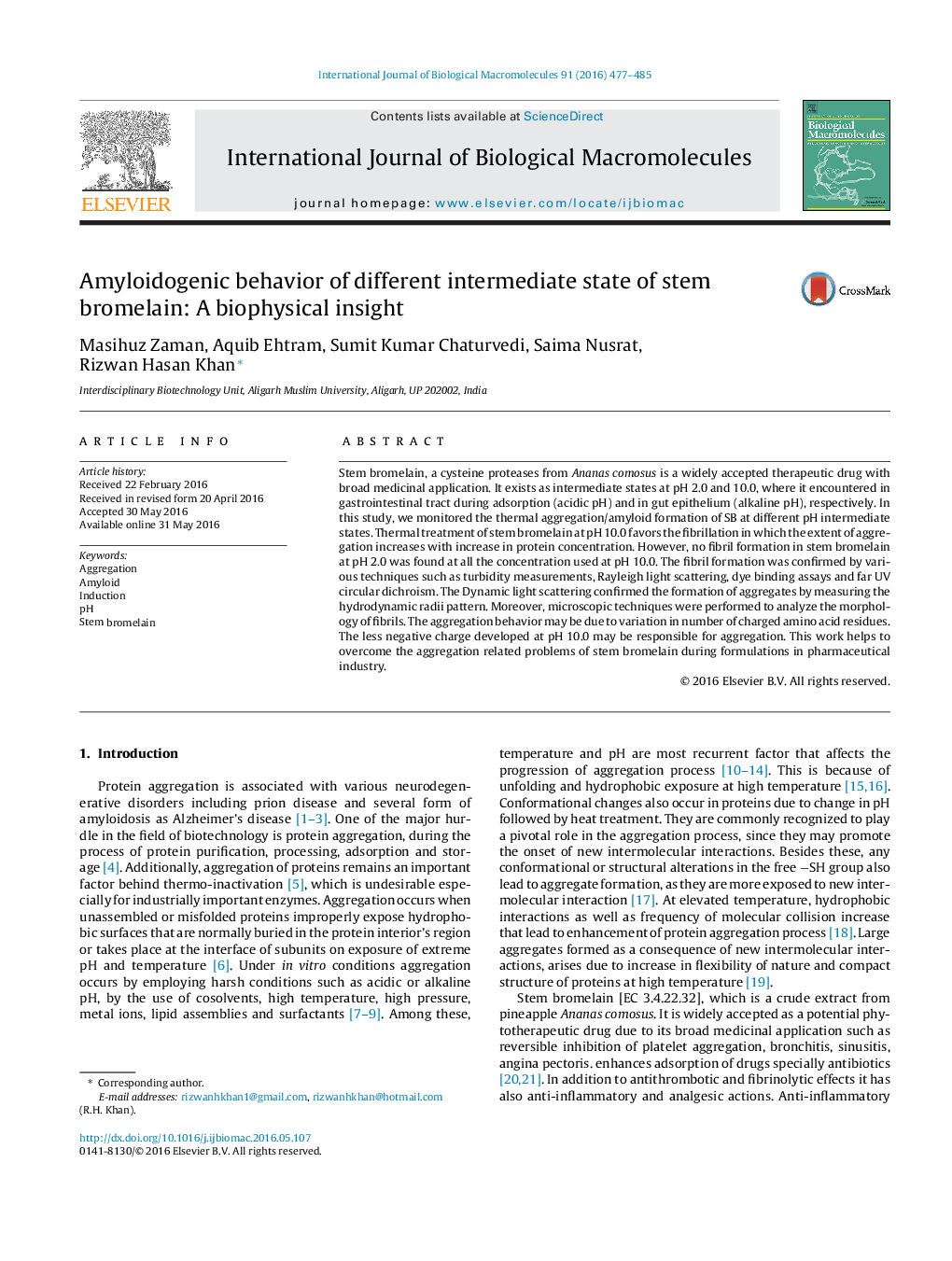| Article ID | Journal | Published Year | Pages | File Type |
|---|---|---|---|---|
| 1985651 | International Journal of Biological Macromolecules | 2016 | 9 Pages |
Stem bromelain, a cysteine proteases from Ananas comosus is a widely accepted therapeutic drug with broad medicinal application. It exists as intermediate states at pH 2.0 and 10.0, where it encountered in gastrointestinal tract during adsorption (acidic pH) and in gut epithelium (alkaline pH), respectively. In this study, we monitored the thermal aggregation/amyloid formation of SB at different pH intermediate states. Thermal treatment of stem bromelain at pH 10.0 favors the fibrillation in which the extent of aggregation increases with increase in protein concentration. However, no fibril formation in stem bromelain at pH 2.0 was found at all the concentration used at pH 10.0. The fibril formation was confirmed by various techniques such as turbidity measurements, Rayleigh light scattering, dye binding assays and far UV circular dichroism. The Dynamic light scattering confirmed the formation of aggregates by measuring the hydrodynamic radii pattern. Moreover, microscopic techniques were performed to analyze the morphology of fibrils. The aggregation behavior may be due to variation in number of charged amino acid residues. The less negative charge developed at pH 10.0 may be responsible for aggregation. This work helps to overcome the aggregation related problems of stem bromelain during formulations in pharmaceutical industry.
Graphical abstractFigure optionsDownload full-size imageDownload as PowerPoint slide
